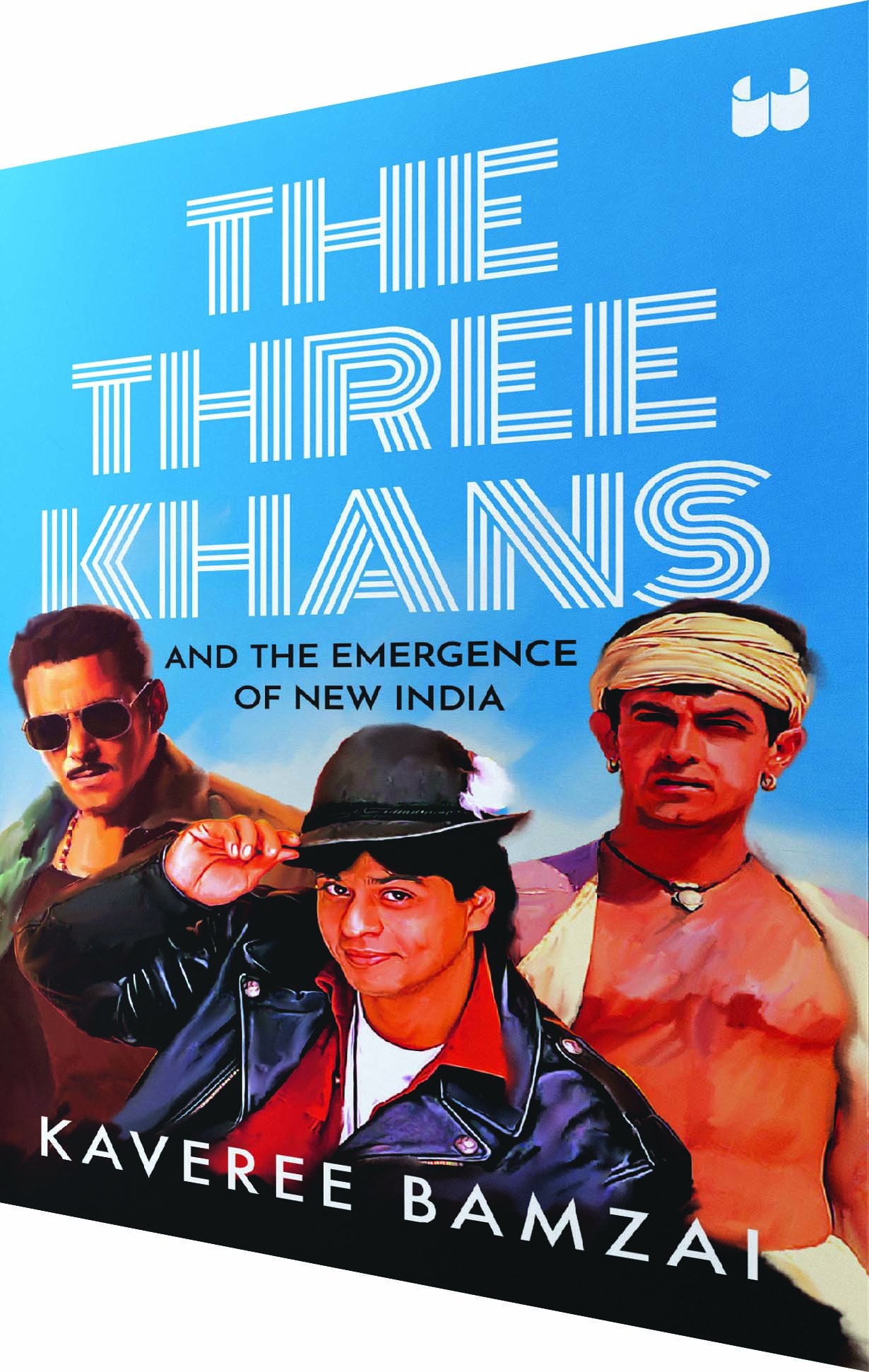The Three Khans, written by Kaveree Bamzai, published by Westland books publications is priced at Rs.599. A compelling narrative of the careers of Bollywood’s three Khans — major figures of the Hindi film industry

Ramachandra Guha is one of few historians to have considered with any degree of seriousness the role of Hindi cinema in keeping India’s chaotic diversity together. Kaveree Bamzai’s engaging book extends Guha’s basic premise by examining the creation of a shared cultural space, even as it compellingly traces the journey of Bollywood’s three Khans — Aamir, Shahrukh and Salman — major figures in the Hindi film industry and a globalising India. Not only has Hindi cinema produced a shared vocabulary of visual aesthetics, music and aspirations, but its evolving ideas of heroism are embodied in the person of male protagonists who have given form to the deepest desires of a generation.
Bamzai cites scholarly studies on subjects of politics, economy and culture, deftly marshalling her resources as she negotiates the complex political terrain of recent history from 1980 to the present, foregrounding the three Khans as they emerge from these times and go on to redefine stardom, each in his own unique fashion.
That Hindi films are an accurate guide to the nation’s changing political contours is a thesis made conclusively in several studies. Stars double up as characters in films and as embodiments of the most desirable political qualities current for the times. If Raj Kapoor and Dilip Kumar were distilled expressions of Nehruvian socialism and secularism, Rajesh Khanna represented the romanticism of the 1960s. The rise of the brooding, angry hero Amitabh Bachchan’s persona reflects the angst of India’s troubled 1970-90 era.
In the mid-eighties, Bamzai engagingly writes, a beleaguered nation rediscovered youth and aspirational desire in prime minister Rajiv Gandhi. Political and economic reforms resulted in the technology boom that changed the shape of business and communication, and marked the heady beginnings of conspicuous consumption in sync with globalisation.
The films of Shahrukh, Aamir and Salman during these years define expectations of the times, as well as the imminent disappointment and eventual lost sheen of these promises. Woven into the narratives of several characters enacted by these stars is the subterranean story of the times told through the unfolding events of their films.
Though the three Khans are assessed collectively, their individual careers even as they correspond to the same timeline, trace different graphs of success and celebration.
Aamir Khan was the first to acquire fame in his uncle Mansoor Khan’s production Qayamat se Qayamat Tak (1988). This film, argues Bamzai, subtly redefined gender dynamics through its portrayal of a younger and softer hero who is the object of desire of its ‘innocent yet determined’ heroine.
Salman Khan whose first hit came with Maine Pyar Kiya (1989), a movie that correlated blatant consumerism with the Hindu joint family, carried the burden of awareness that the other Bandra boy Aamir, whom he had met occasionally, was already a star.
Distant from both these two young men was Shahrukh. Unlike Aamir and Salman, he had only known the world of theatre in Delhi and had no association with the film industry. His career started as a small-time actor in television shows. Shahrukh’s early films Raju Ban Gaya Gentleman (1992) and Kabhi Haan Kabhi Naa (1994) perhaps mirror his own struggle as an ambitious youth thirsting to rise quickly in his career and gain fame and fortune.
In aspirational India set into momentum by the last decade of the 20th century, the state was the enabler of the burgeoning middle class. The effect of this phenomenon was a new hero representing creamy top layer society and the glitz of India shining. Not surprisingly, film plots turned away from the pressing concerns of the rural and urban poor, even as the single screen theatre gave way to the comforts of the multiplex catering to its well-heeled clientele unwilling to rub shoulders with the hoi polloi.
In the last few years, the Khans have had to face a string of films that failed at the box-office. Younger male leads are closing in on the race to stardom, even as older contemporaries such as Akshay Kumar continue to have an effective presence, perhaps a result of courting political patronage.
Shrill and orchestrated campaigns on television and social media platforms are targeting the Khans’ religious identities. In changing modes of how entertainment is produced and consumed, it remains to be seen if the ageing Khans can reinvent themselves again in the face of competing OTT platforms that restrain the erstwhile reach of cinema; and also at times when democratic processes and guarantees, which underpinned the shared cultural space that is Bollywood cinema, are eclipsed by the untrimmed ambition of political stardom.
Rohini Mokashi-Punekar (The Book Review)


























